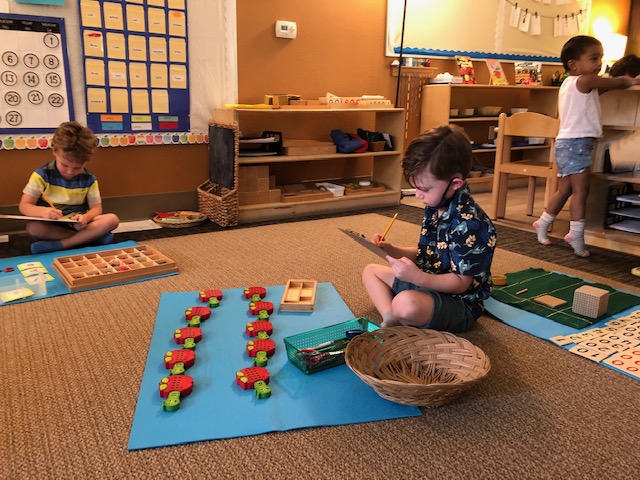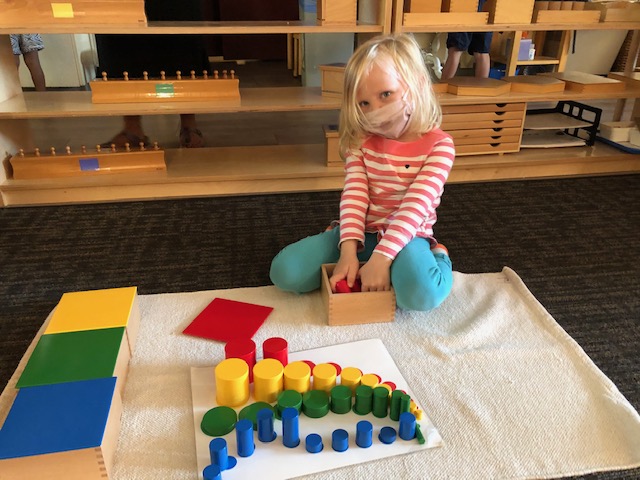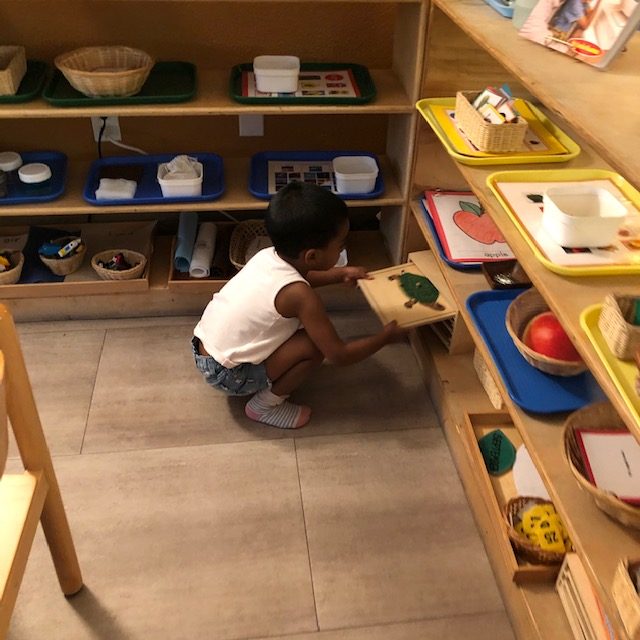“Normalization” is a Montessori concept which describes a time when students are truly engaged in the work of the classroom. It is best experienced as a quiet, focused hum in the room. If a person were to walk in at that moment, it might take them a while to spot the teachers giving lessons on the floor, as every student is engaged in meaningful activity. How does that happen? It all begins with the prepared environment. P4 is organized into areas including language, math, sensorial, practical life, science, cultural, and art. Each one of these areas is defined by the shelves holding specific materials. Work is placed on the shelf in a manner that is useful and interesting. The introductory (easiest) work is on the top of the shelf going from left to right, with the most challenging work positioned on the bottom of the shelf.

The children are given specific lessons using the work on the shelves, and they are also taught to return the materials in the exact manner they found it. This system allows students to move independently around the classroom working with a large variety of jobs. Since the primary classroom is multi aged (3-6 years old), materials are visible and available for a range of ages and abilities. It is common to see younger students observing larger works being done by their older peers.

Dr. Montessori observed in her classrooms (over 100 years ago):
Normalization comes about through “concentration” on a piece of work. For this we must provide “motives for activity” so well adapted to the child’s interest that they provoke his deep attention. Their success in this is dependent on the use of the objects for the purposes they are designed to serve, a thing which is also conducive to the child’s “mental order.” If they are used with care and precision, this leads the child to the “coordination of his movements.”
~ The Absorbent Mind, Dr. Maria Montessori, pg.206







